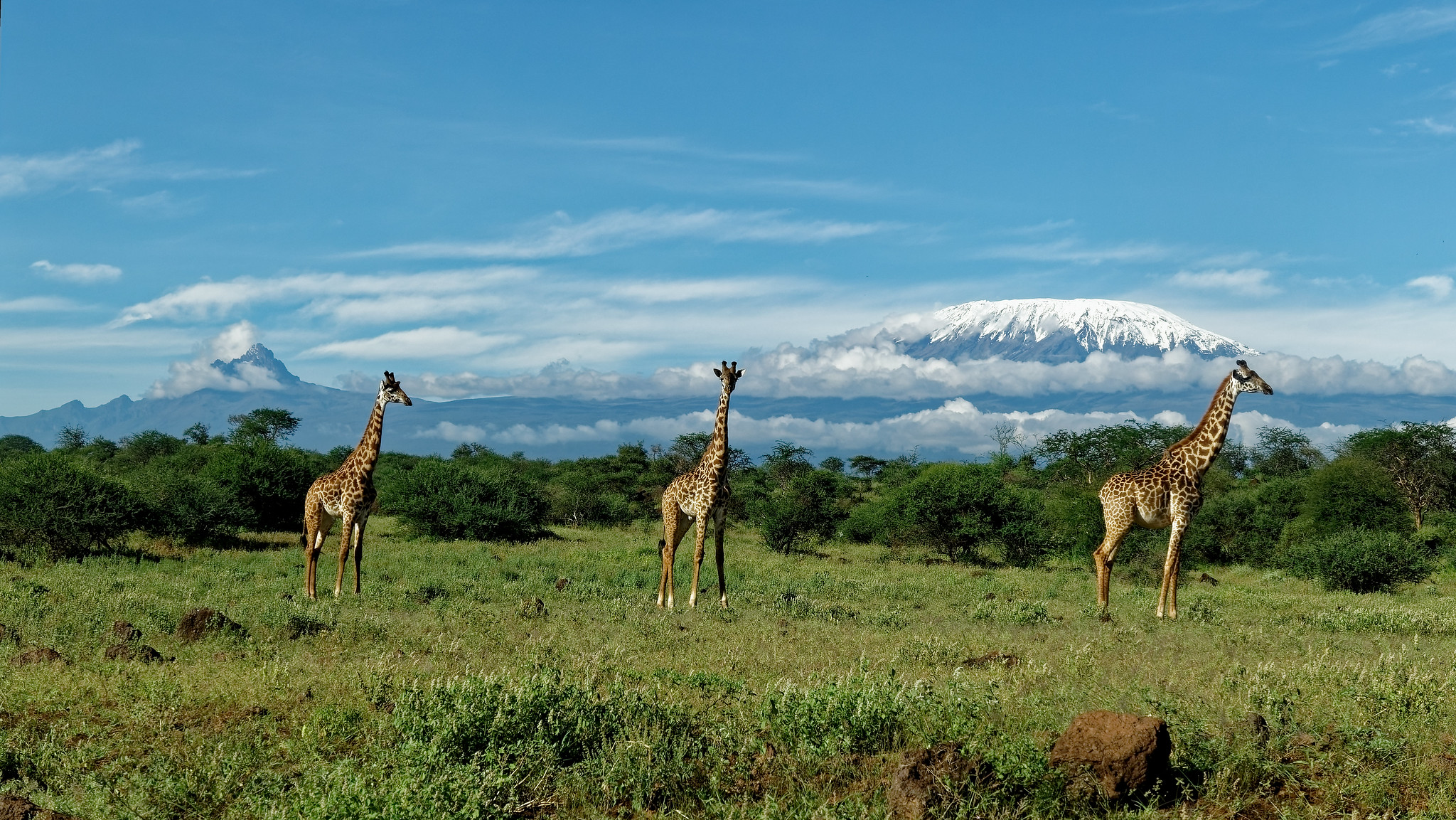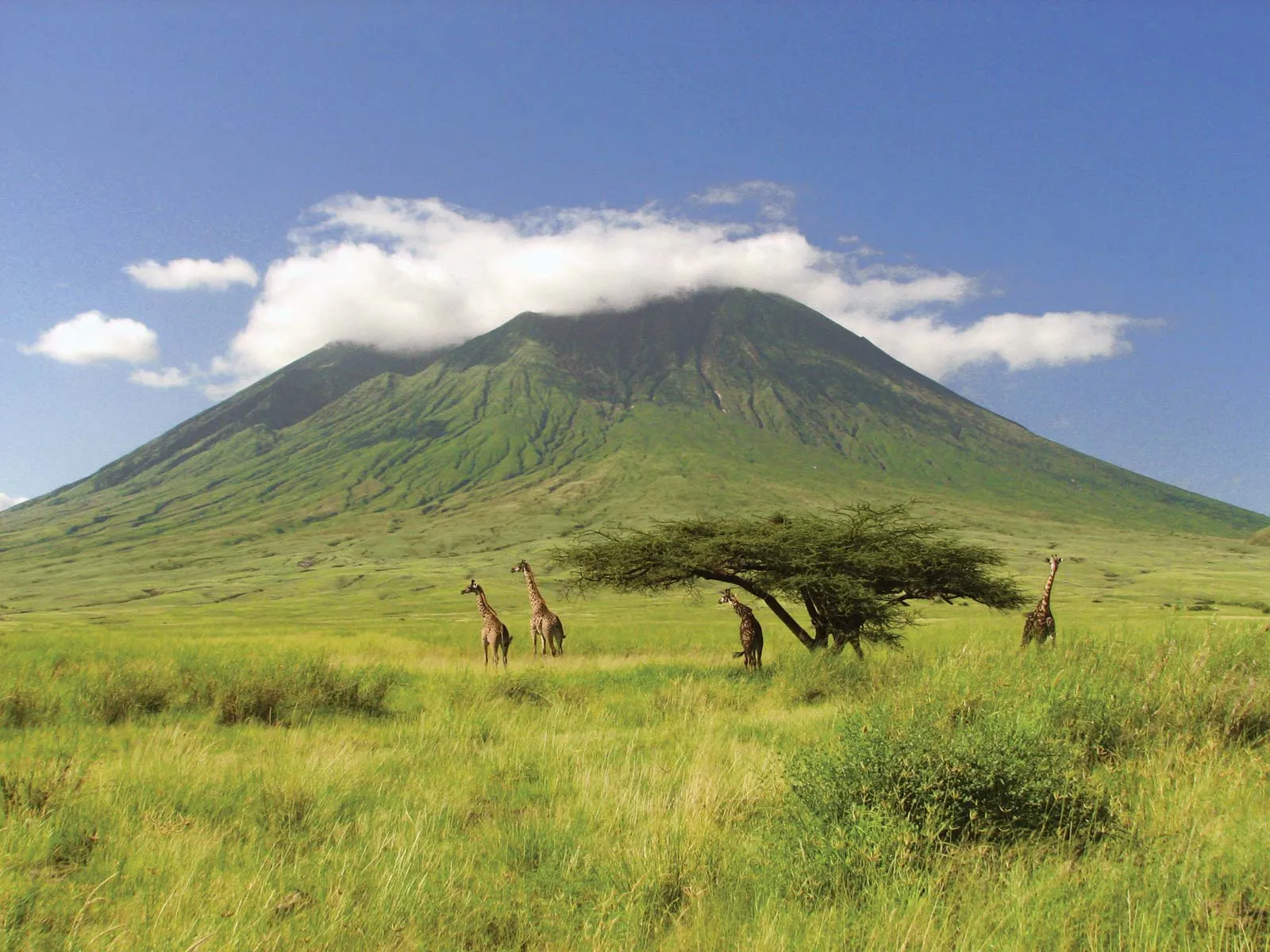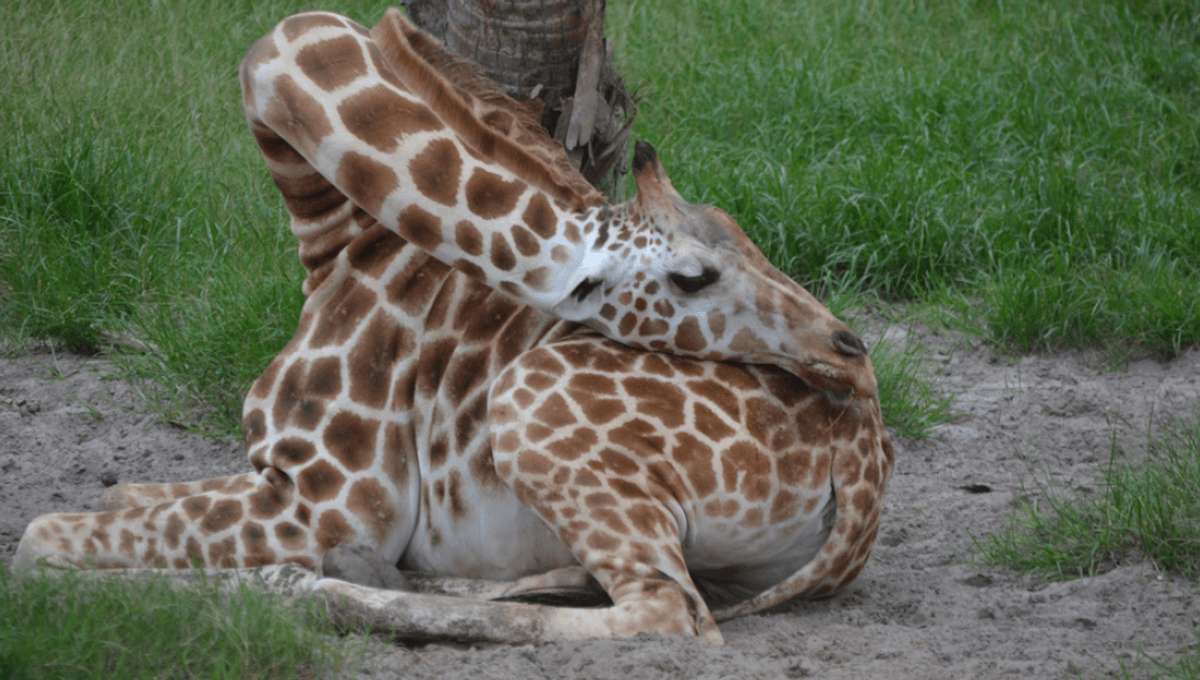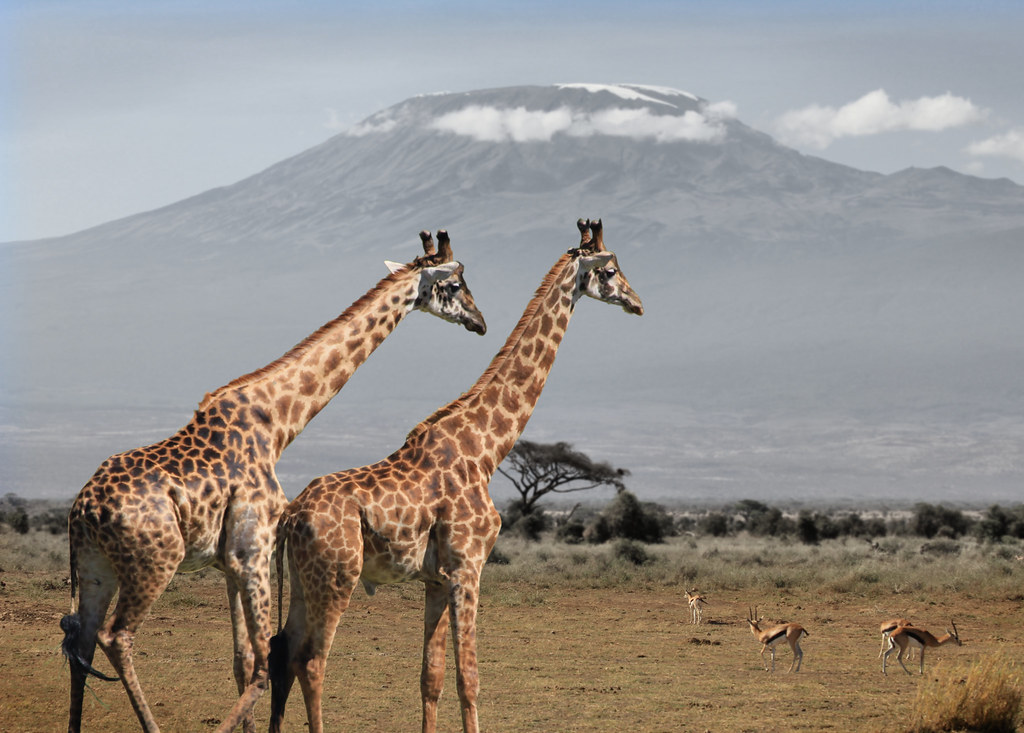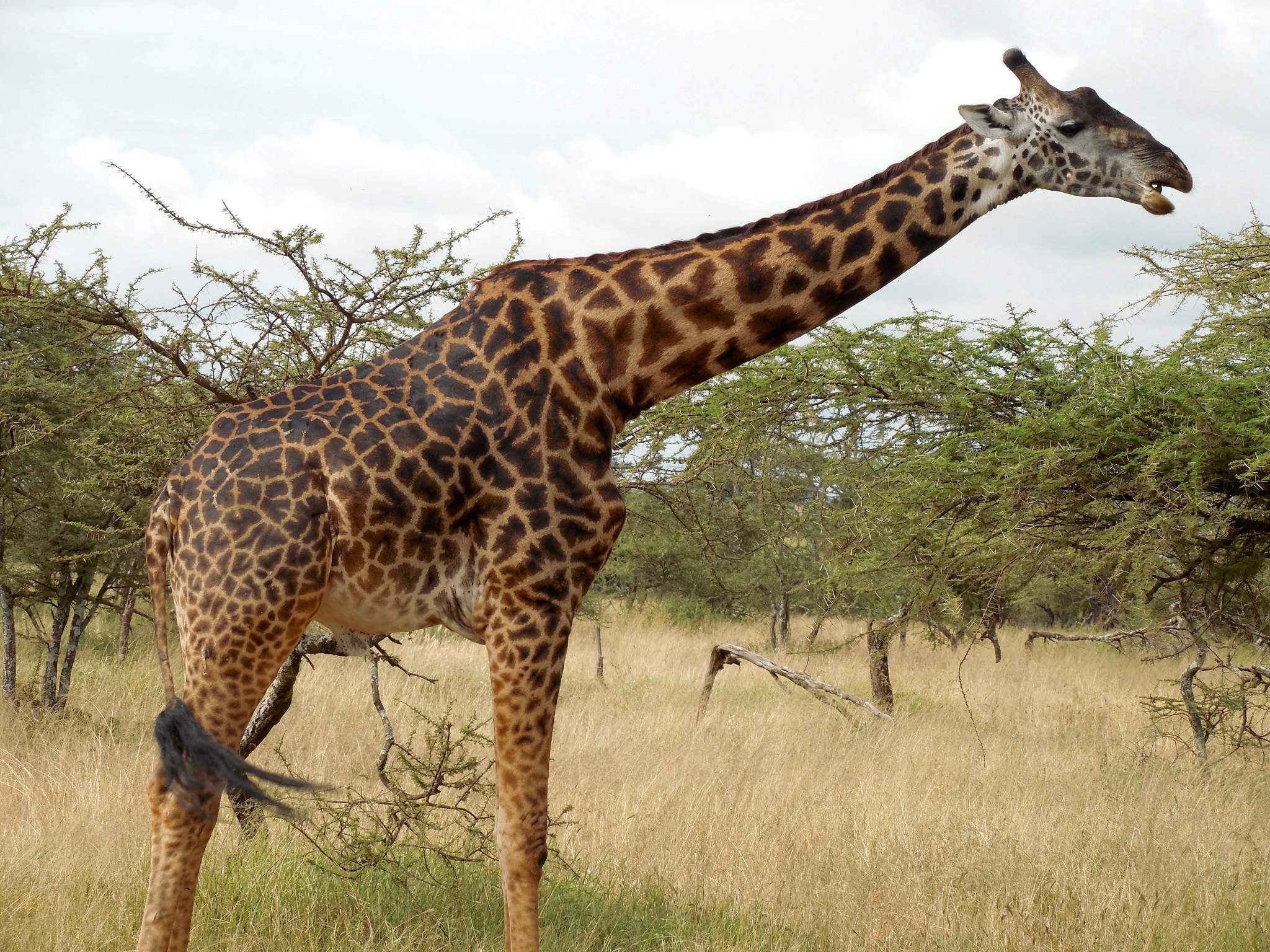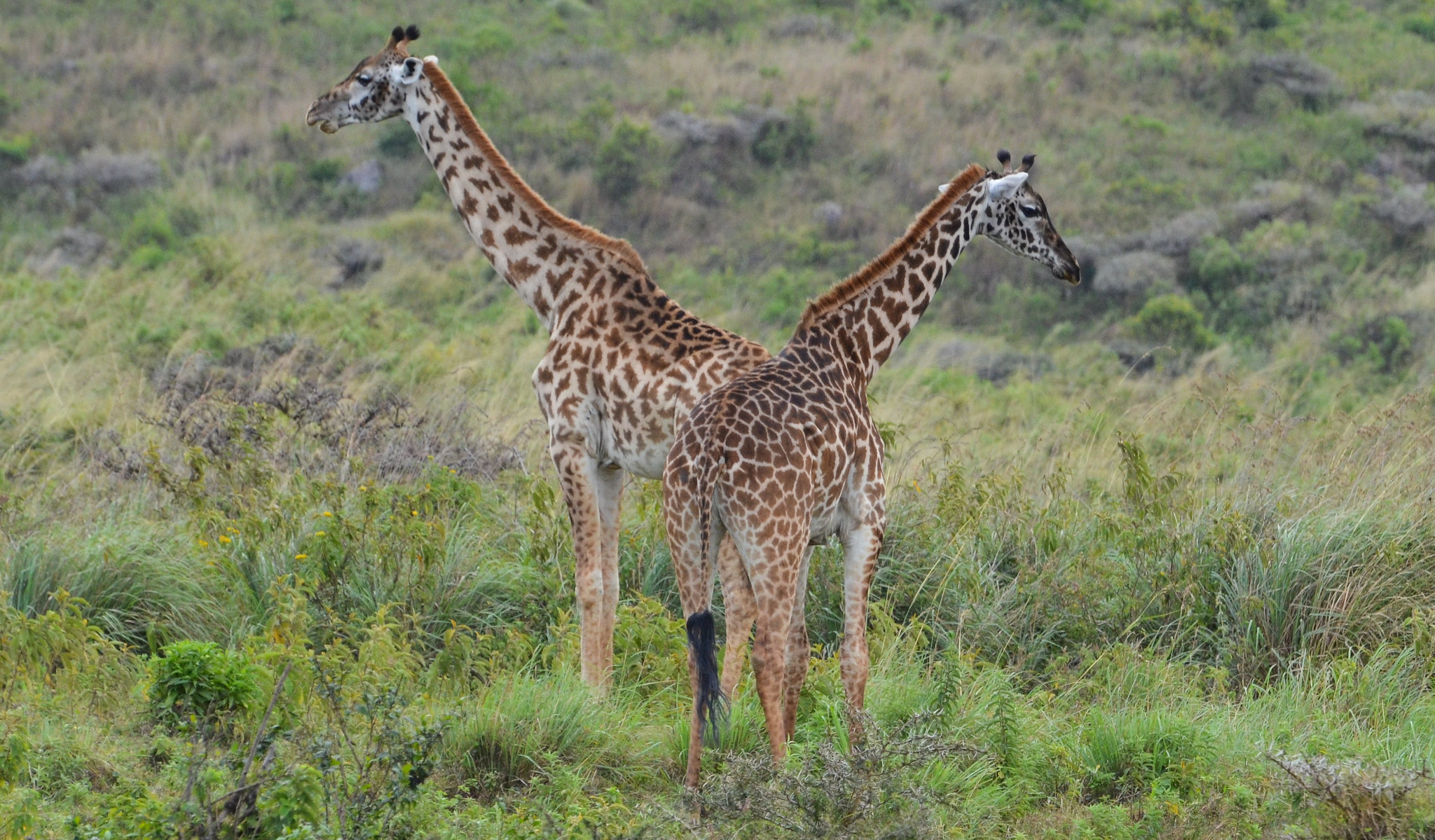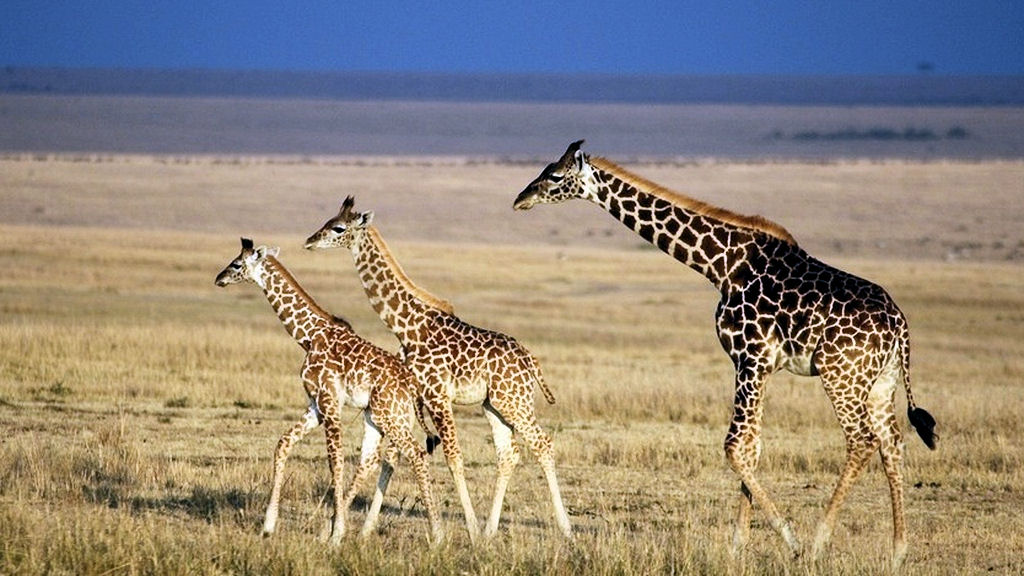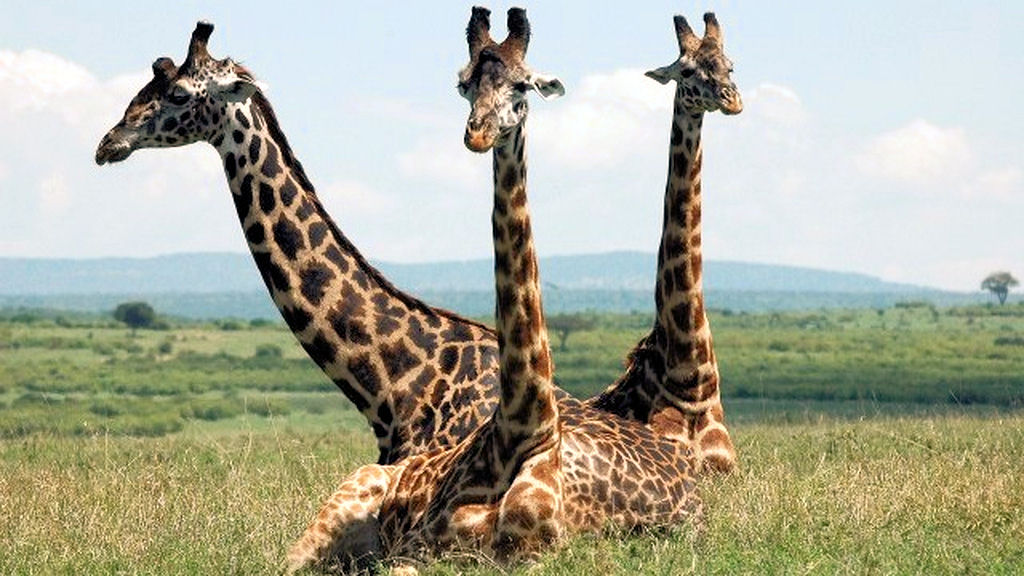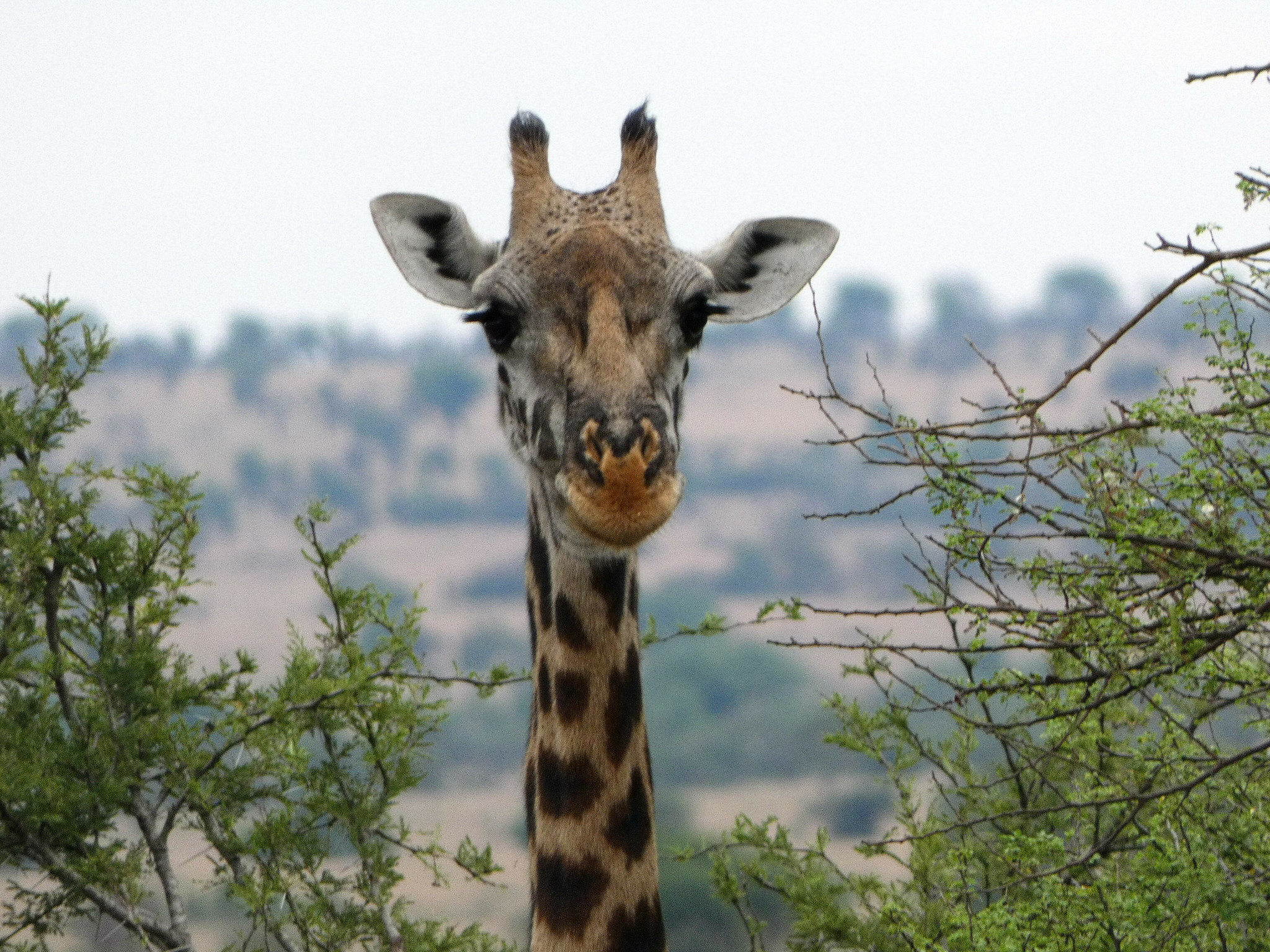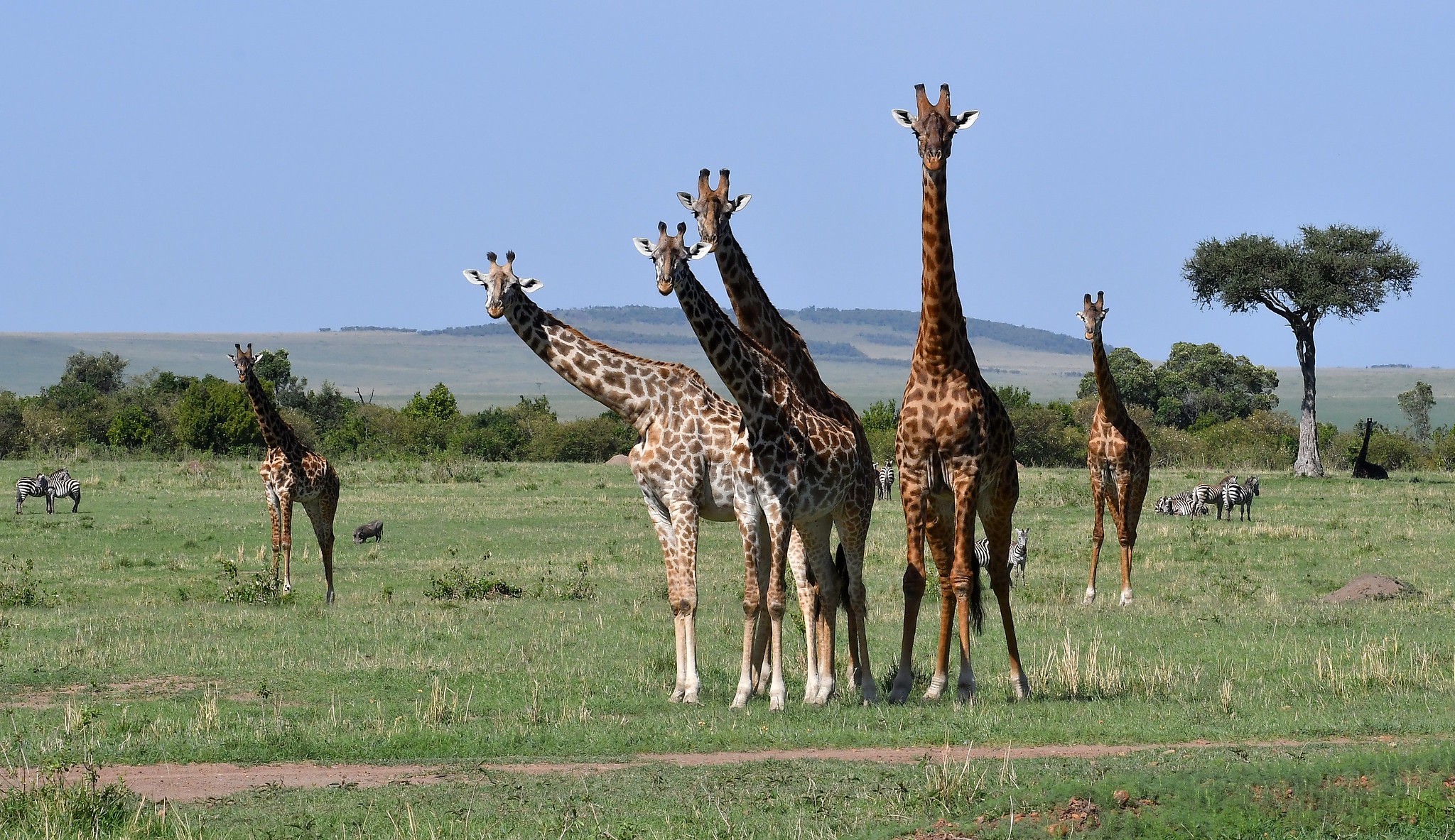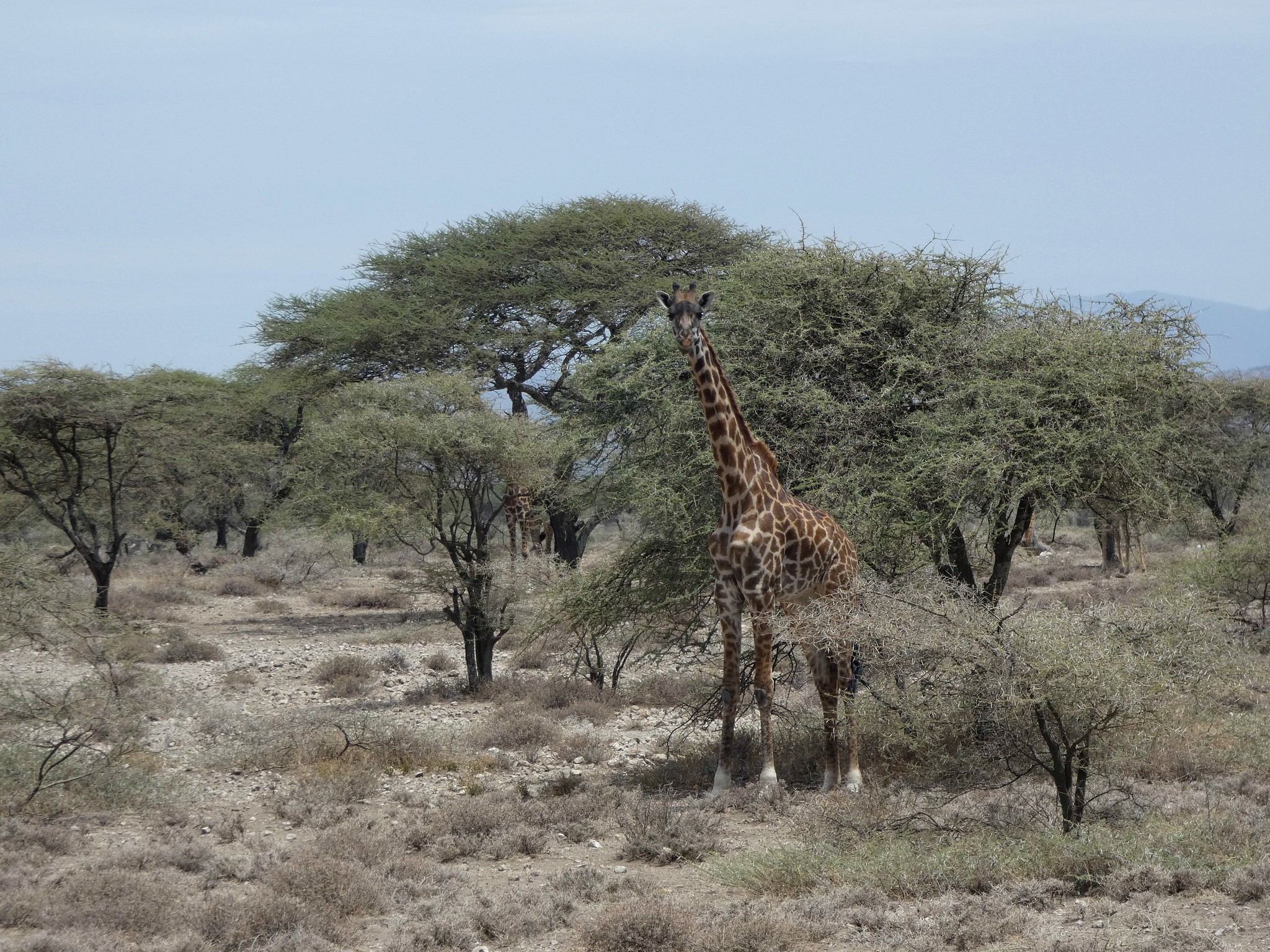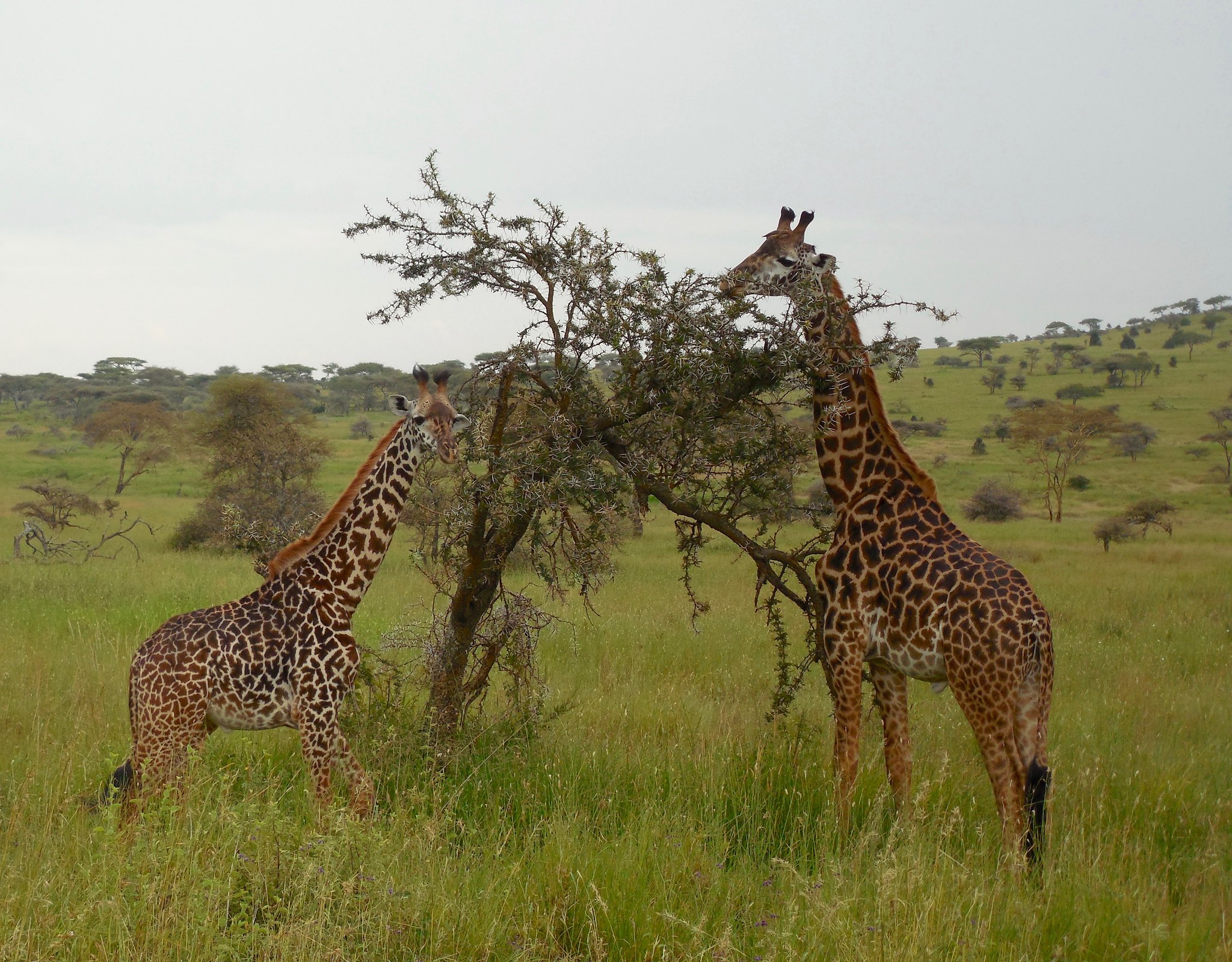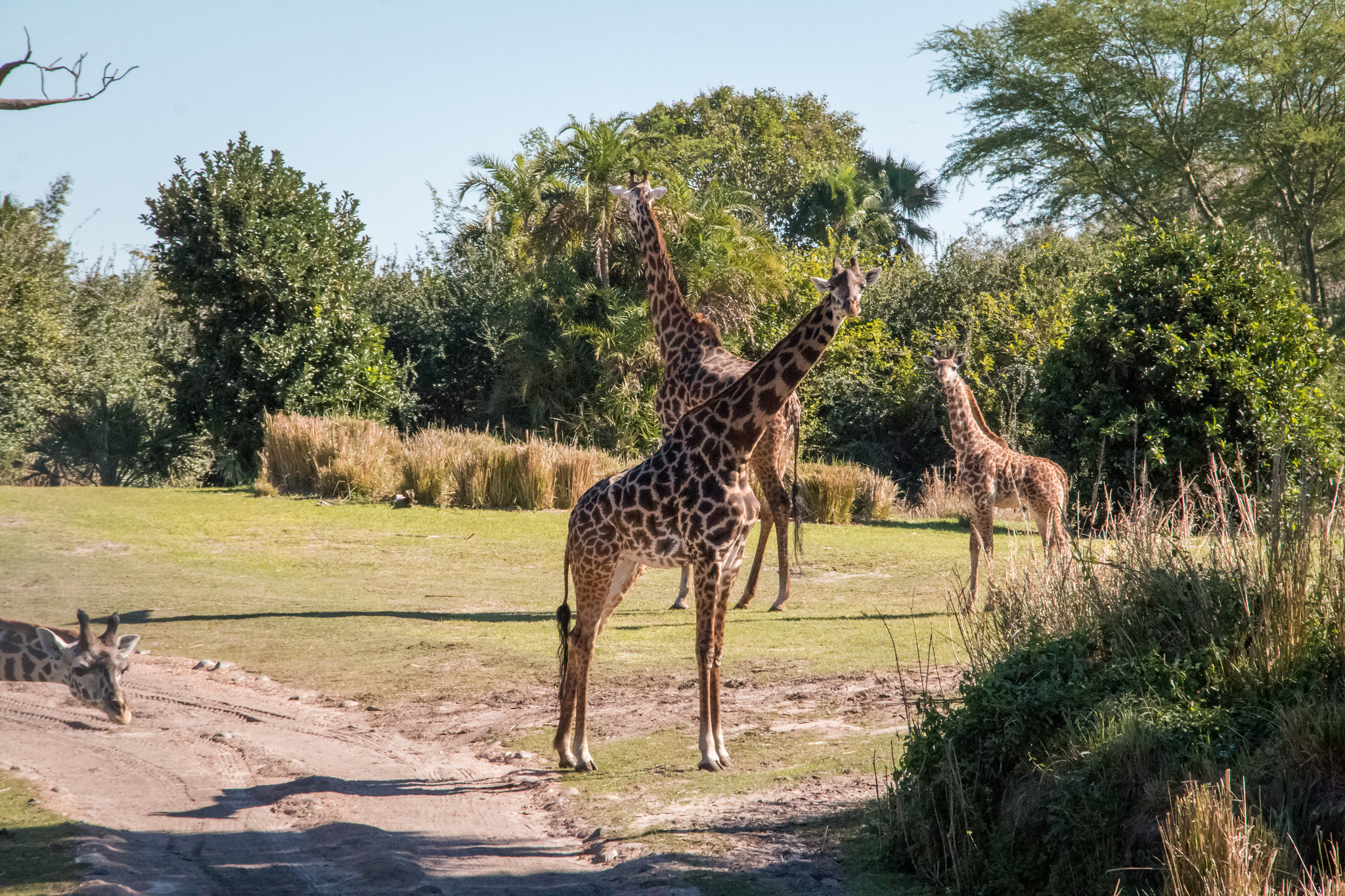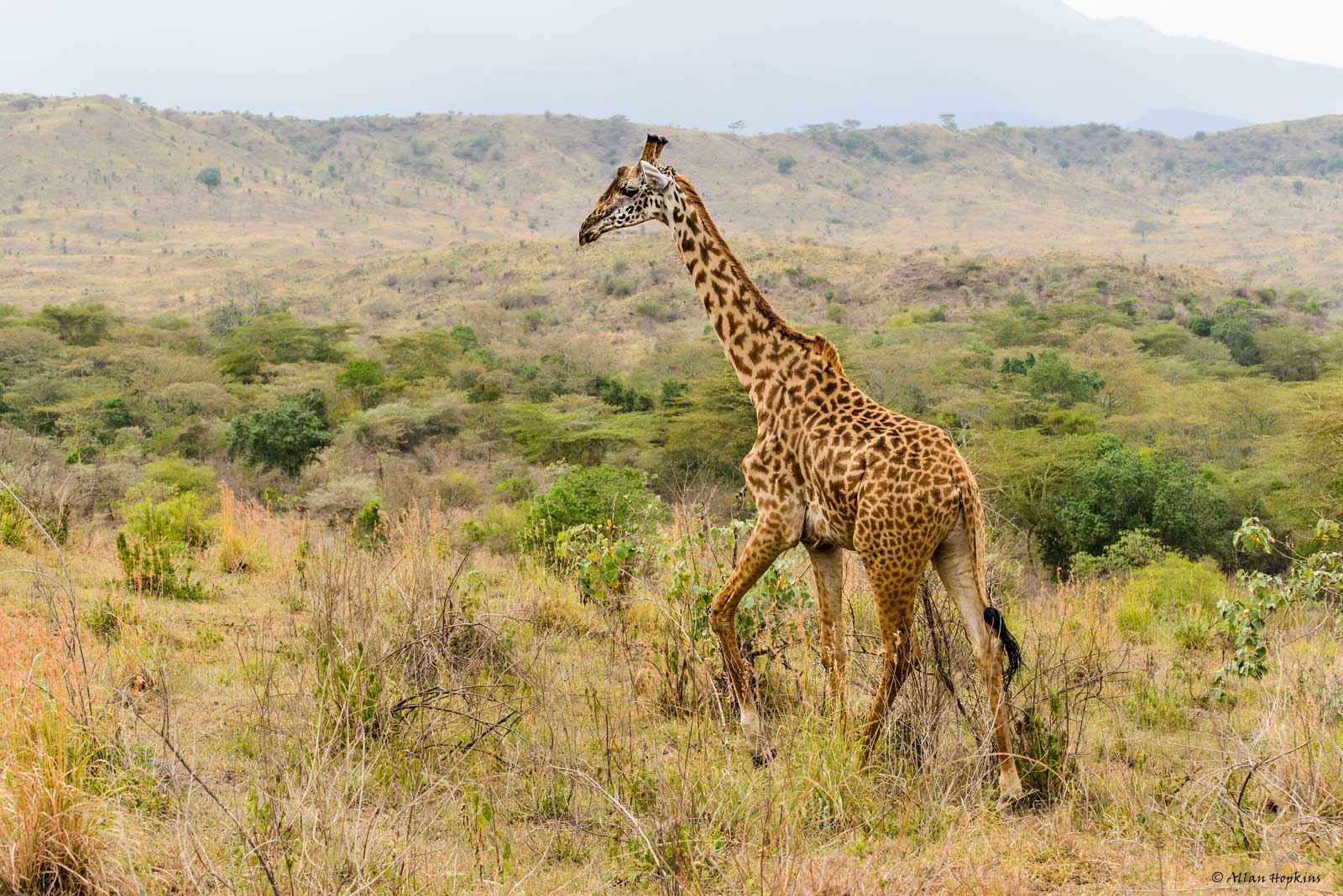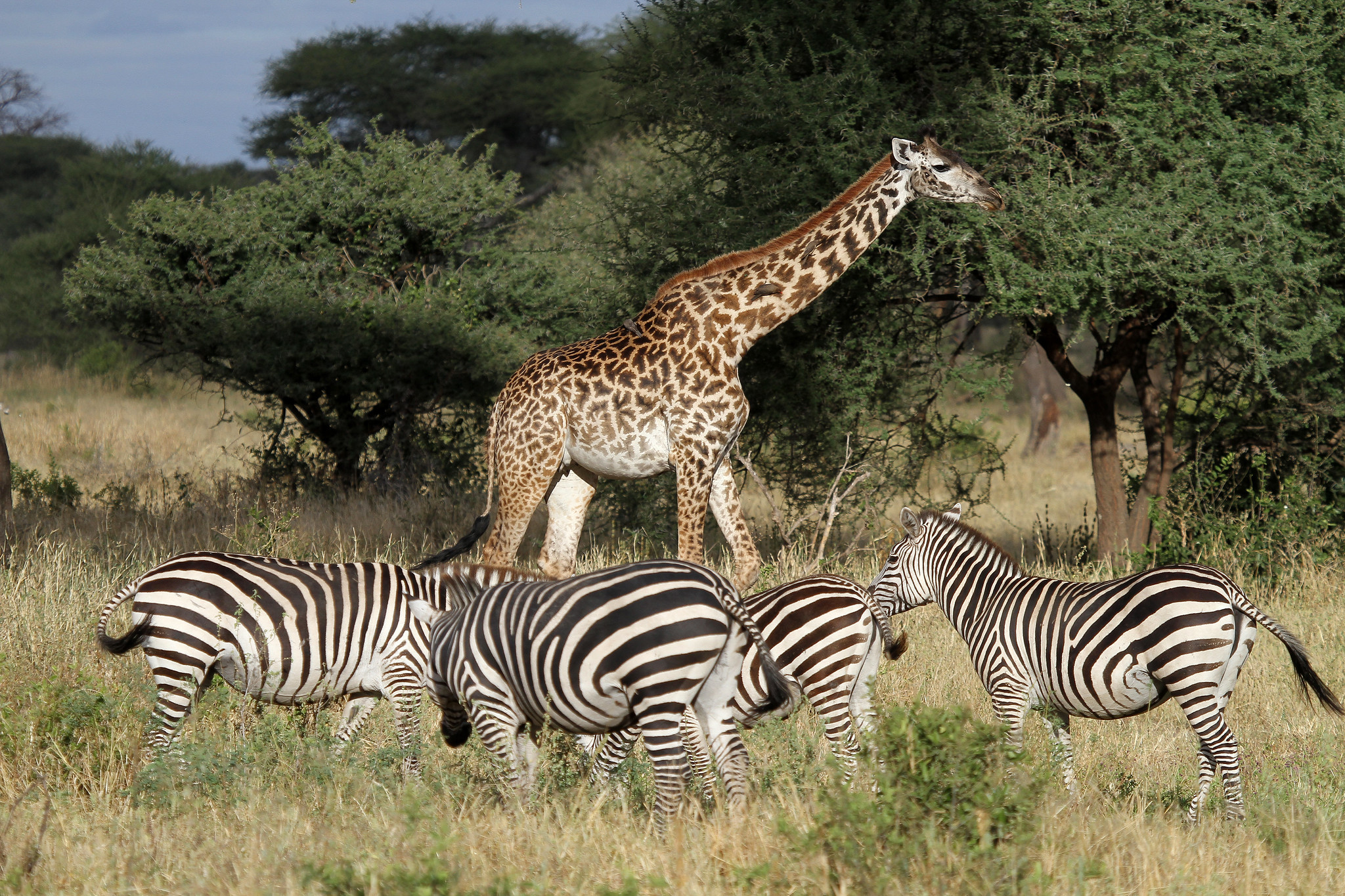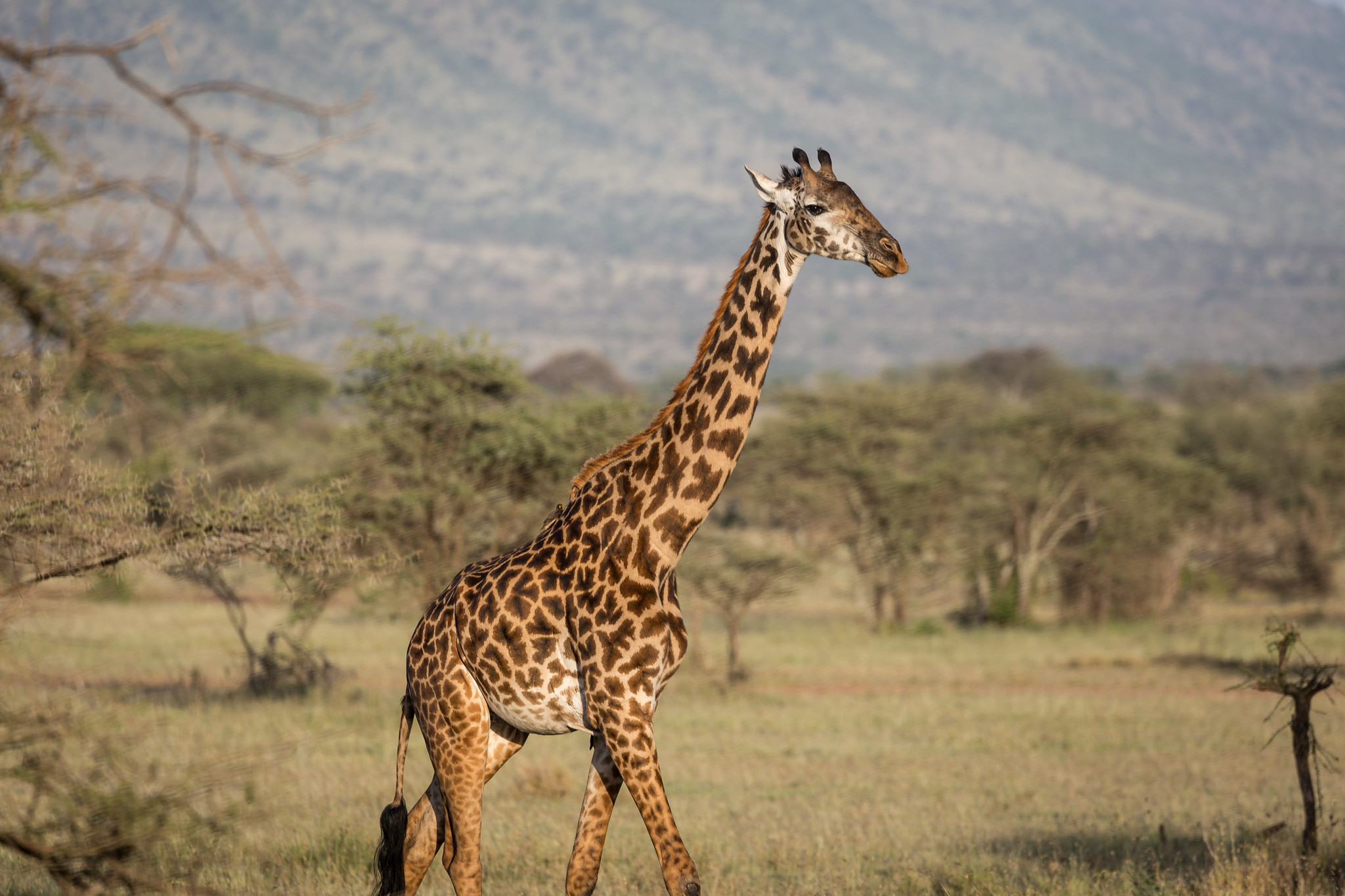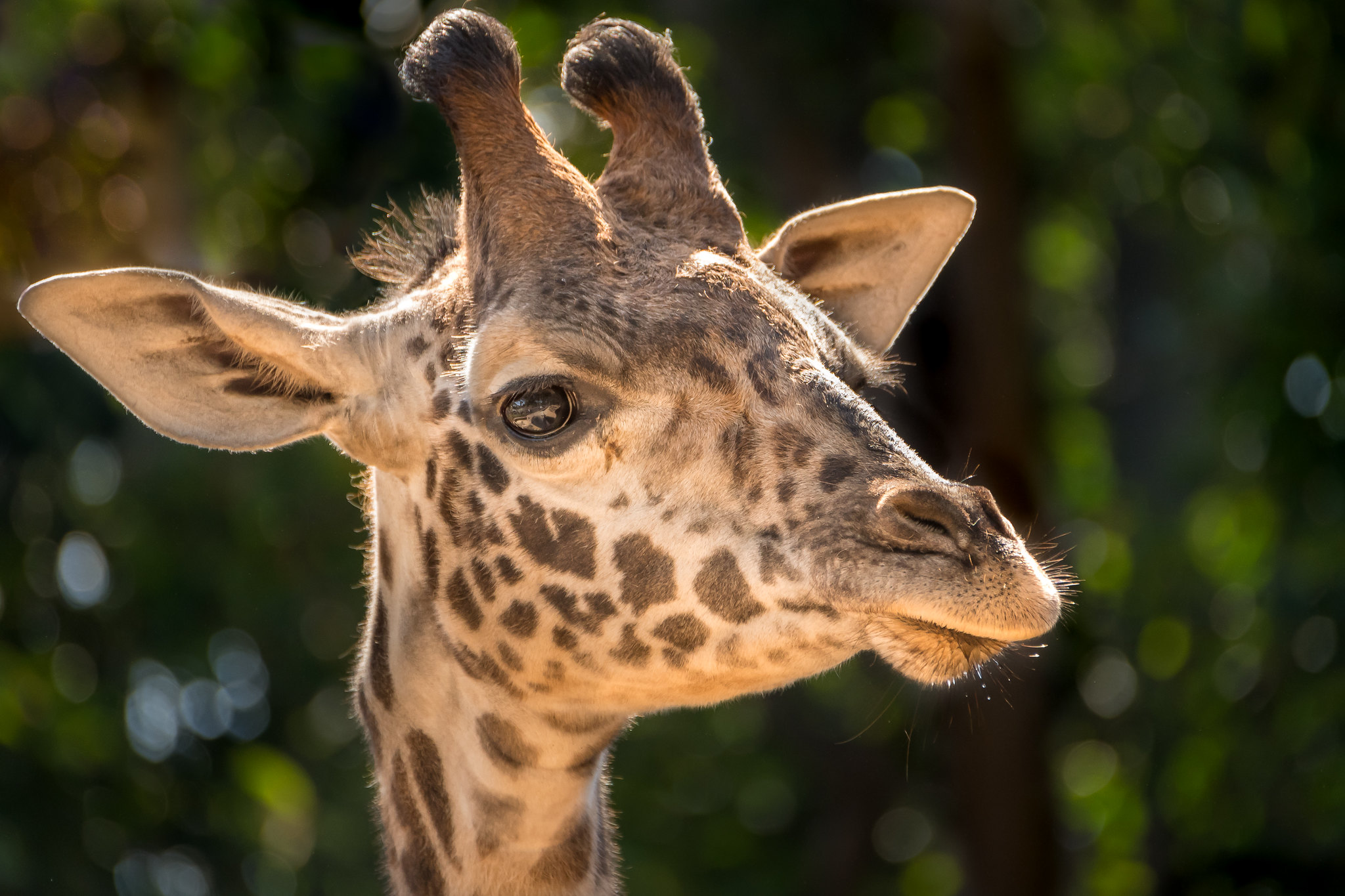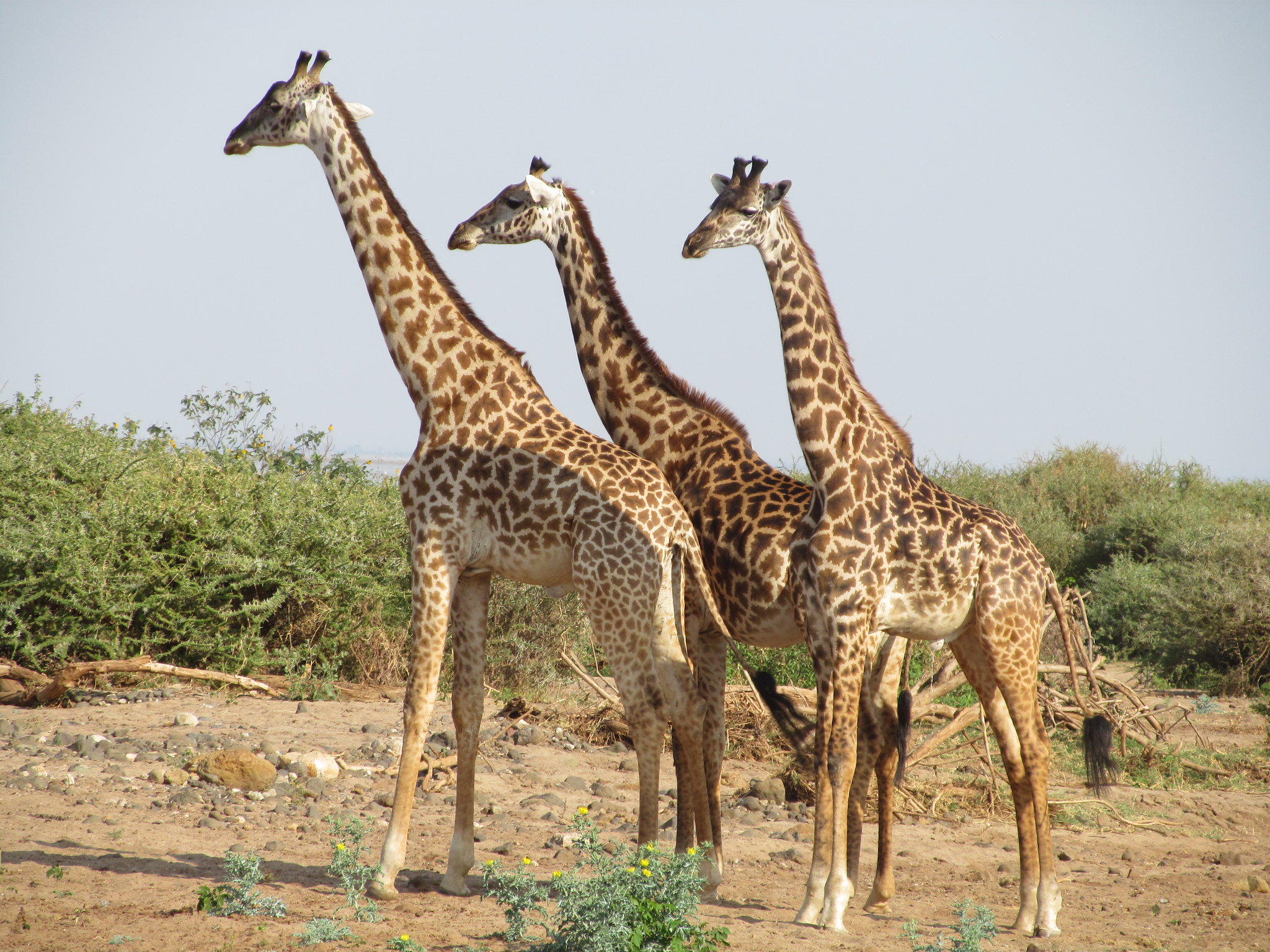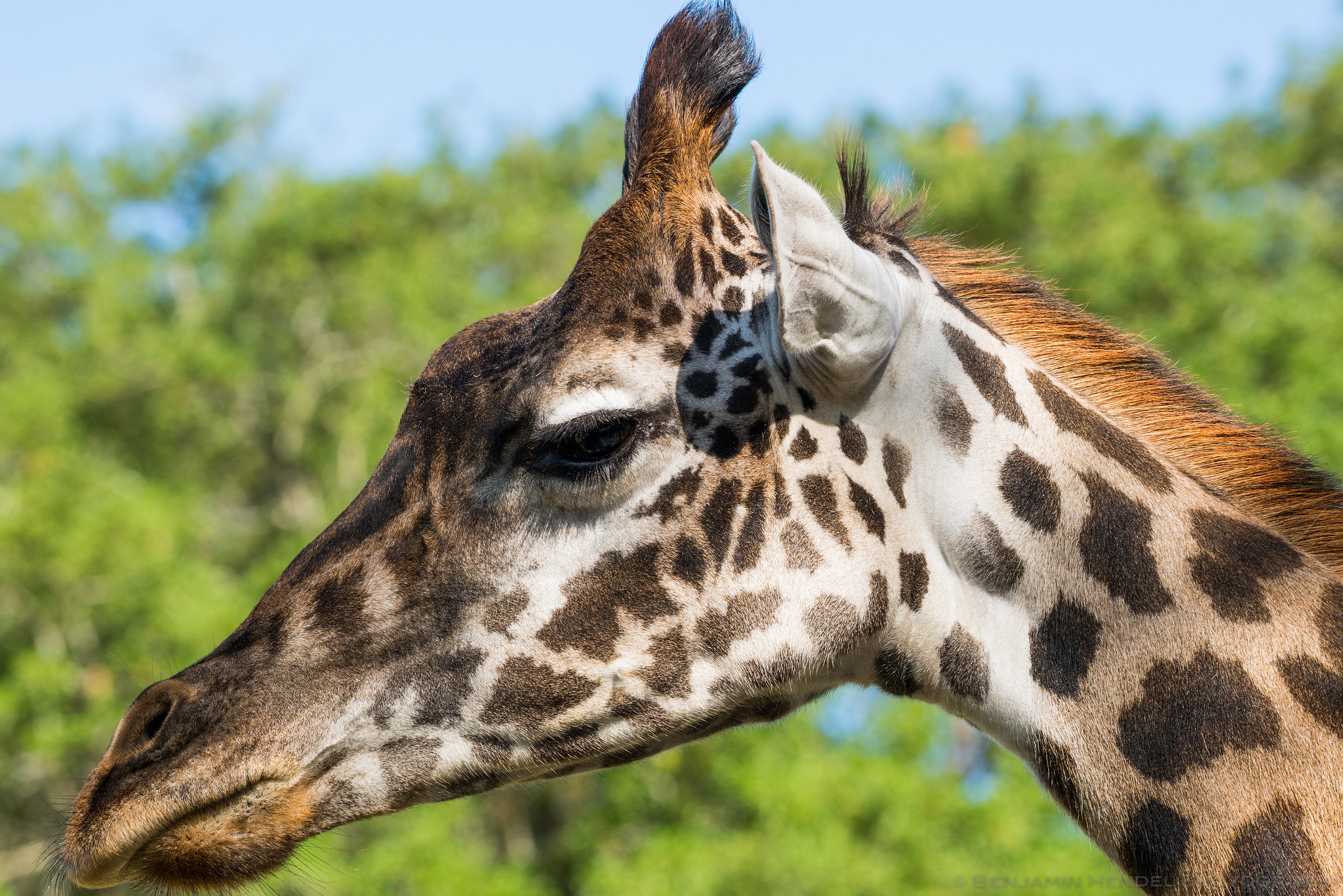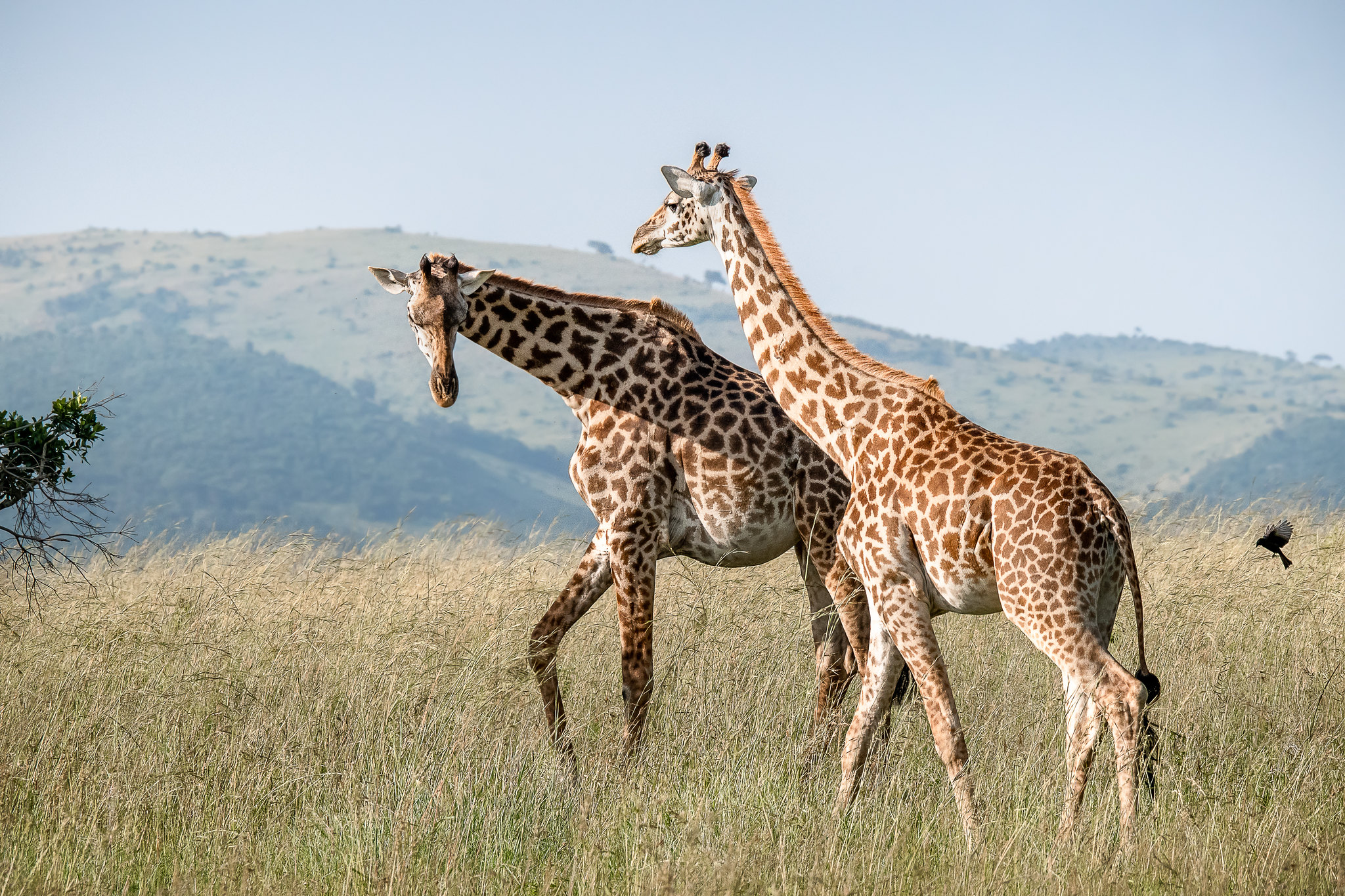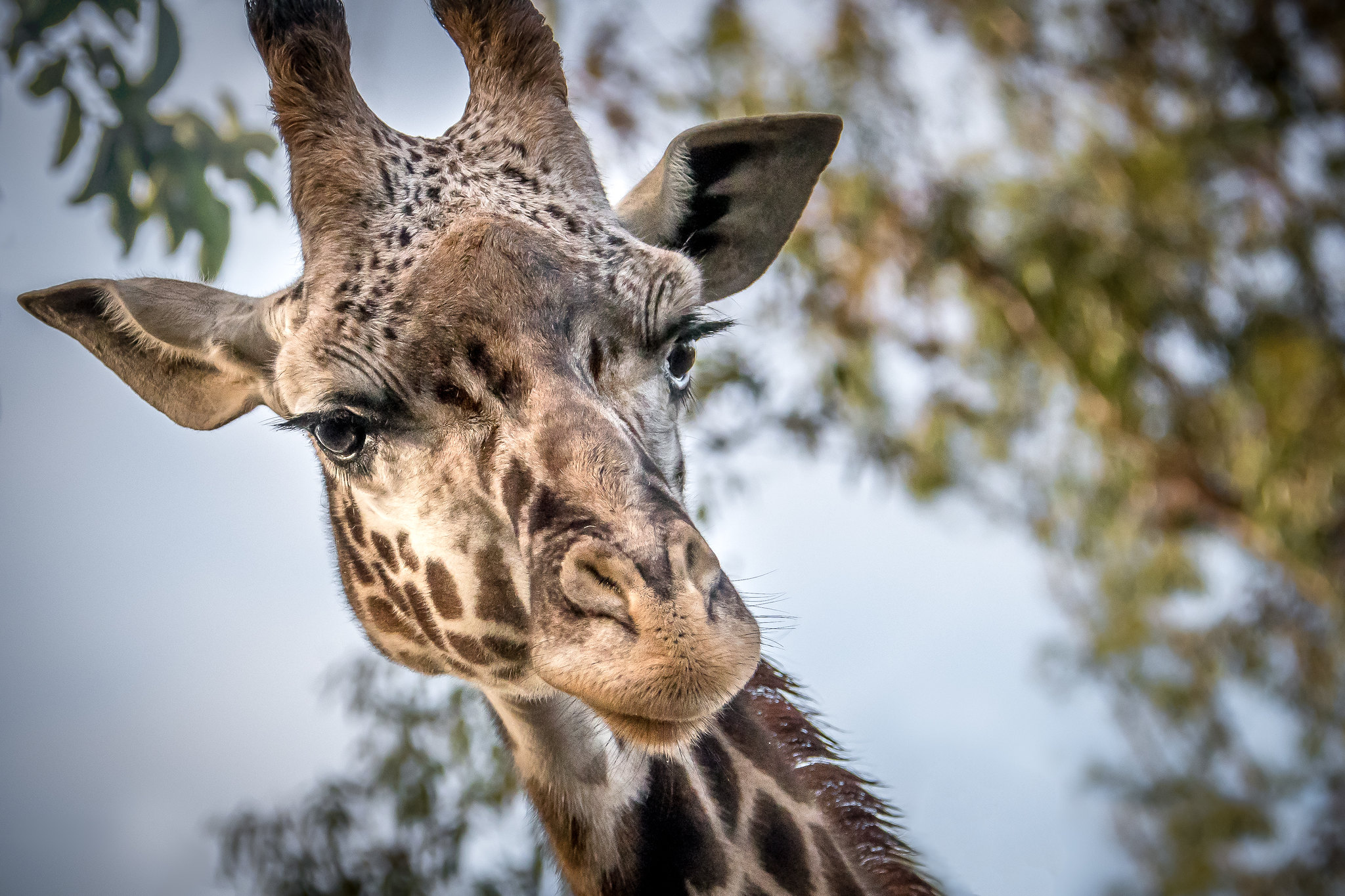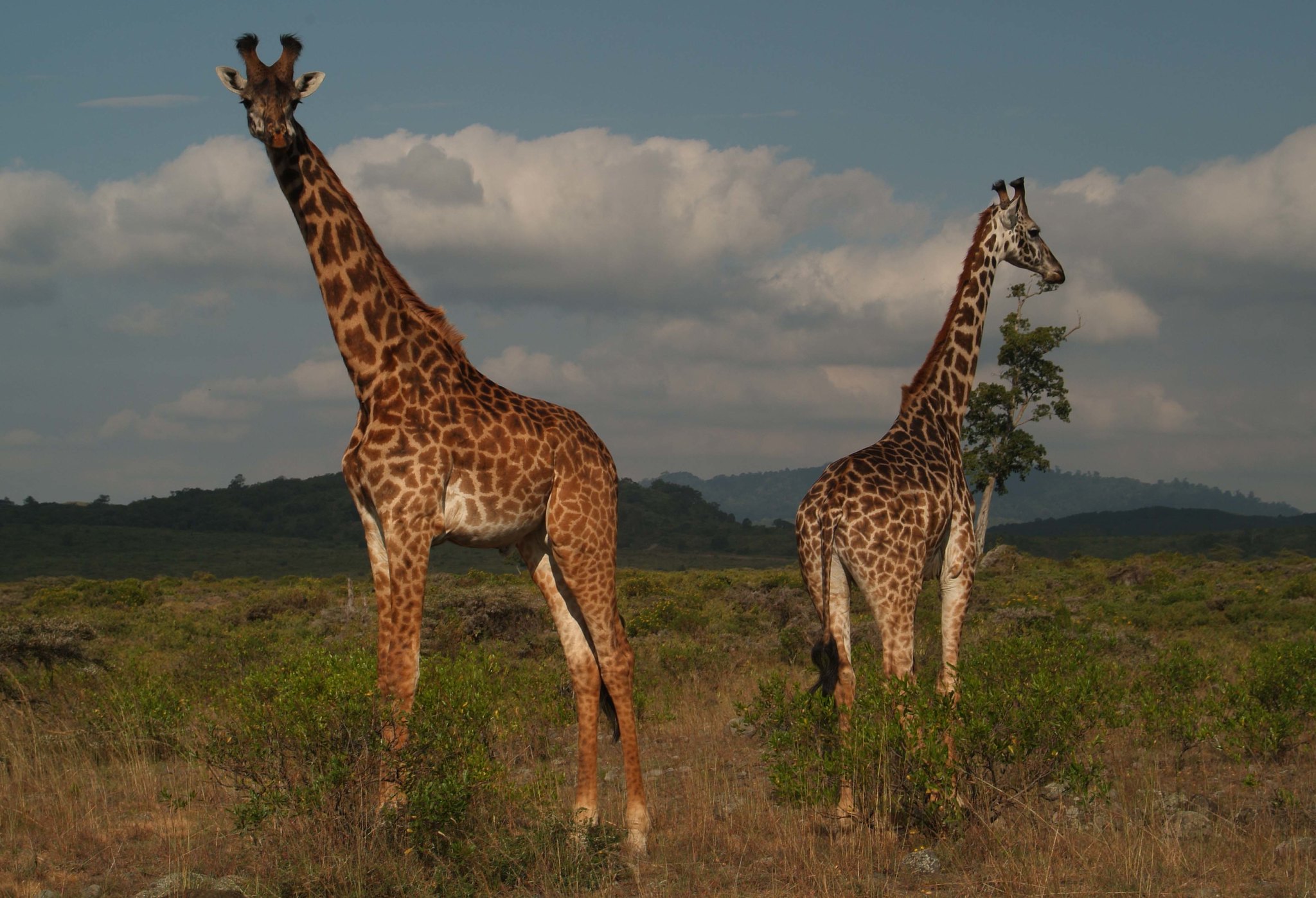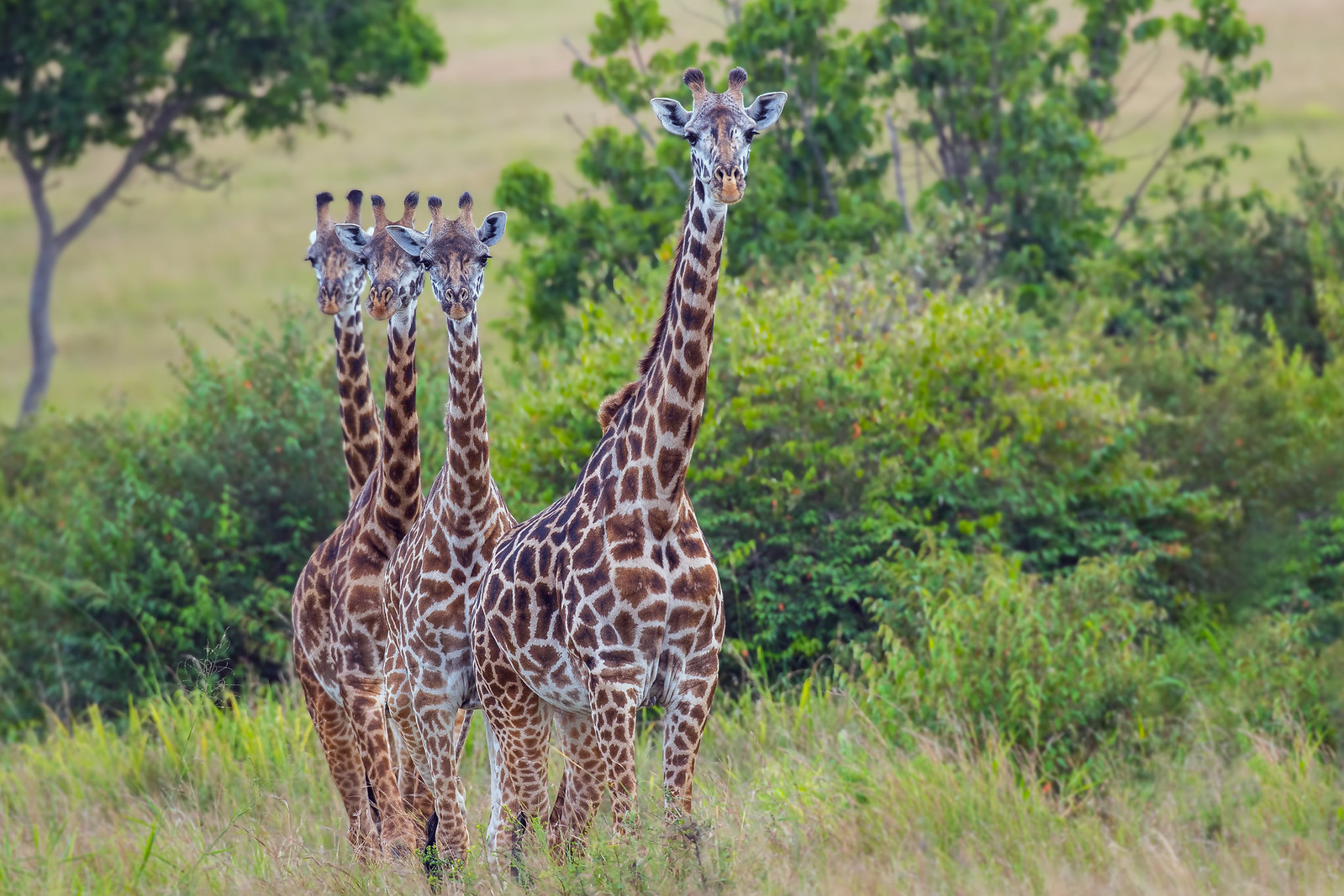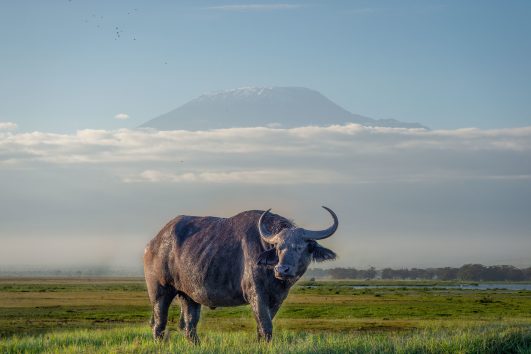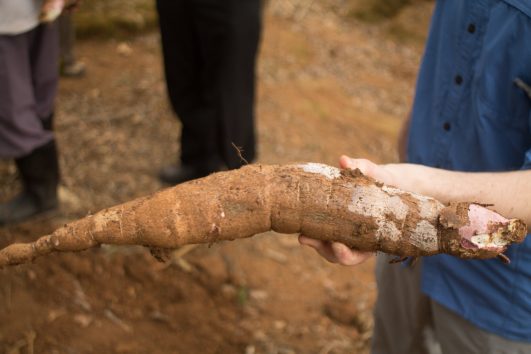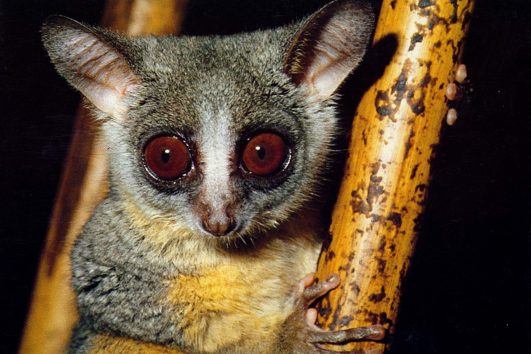The Masai giraffe is found in Tanzania’s Mount Kilimanjaro region, around Mount Meru in Arusha National Park, and other parks including the Serengeti National Park, Tarangire, and Lake Manyara. It is also found in central and southern Kenya, near Mount Kenya National Park, Masai Mara Game Reserve, Amboseli National Park bordering Kilimanjaro National Park and other areas. From the hooves to the top of its head, it has characteristic spots that resemble jagged, uneven leaves. Currently, Tanzania’s national animal is the Masai giraffe.
About the Kilimanjaro / Masai Giraffe
- Physical Appearance:
- Size: Males can grow up to 19 feet (5.8 meters) tall, while females reach up to 16 feet (4.9 meters). Males weigh between 2,475 to 4,275 pounds (1,100 – 1,900 kg), and females between 1,575 to 2,700 pounds (700 – 1,200 kg).
- Spots: Their fur is covered with jagged, irregular spots, darker in dominant males, which are unique to each individual, much like human fingerprints. These spots extend down to their hooves, unlike some other giraffe species where the pattern fades below the knees.
- Neck and Head: They possess a long neck with seven elongated vertebrae, making up about one-third of their height. Their heads feature two ossicones, bony structures covered with hair, which are more pronounced in males.
- Adaptations:
- Tongue and Lips: Their long, prehensile tongue (up to 20 inches or 50 cm) and thick, protective saliva allow them to eat leaves from thorny acacia trees without injury.
- Blood Circulation: Special valves in their necks prevent blood from rushing to their brains when they lower their heads to drink, a critical adaptation for such tall creatures.
- Habitat:
Masai giraffes are found in the savannas of Kenya and Tanzania. They prefer areas with acacia trees, which are their primary food source, but they’re adaptable, capable of surviving in various landscapes from open plains to woodlands. - Diet: They are browsers, feeding on leaves, twigs, and bark, particularly from acacia trees. Their diet is so specialized that they can consume up to 75 lbs (34 kg) of foliage daily, often not needing to drink water as they get sufficient moisture from their food.
- Behavior and Reproduction:
- Social Structure: They form loose herds, with males often engaging in “necking” to establish dominance.
- Reproduction: Gestation lasts about 13-15 months, resulting in a single calf. Newborns are about 6 feet tall and can stand and run shortly after birth, a crucial adaptation for survival against predators.
- Conservation Status: The Masai giraffe is listed as Endangered by the IUCN, with a significant population decline due to poaching and habitat loss. Efforts for conservation include both in-situ actions by government agencies and NGOs, focusing on habitat preservation and anti-poaching measures.
Kilimanjaro Giraffe Safaris
To see Kilimanjaro Giraffes on safari, you have to book a Tanzania safari to Serengeti, Lake Manyara National Park, Tarangire National Park or simply take a day trip to Kilimanjaro National Park in Tanzania or Amboseli National Park in Kenya. There are a few giraffes at Disney’s Animal Kingdom that can be seen at Kilimanjaro Safaris but wouldn’t it be nice seeing these wild animals in their natural habitat?
How do Giraffes Sleep?
Giraffes have adapted to sleep while standing to protect themselves from predators, allowing them to quickly wake up and flee if necessary. As animals that must remain vigilant in the African Savanna like Serengeti National Park, they’ve evolved to require only about 30 minutes of sleep daily, though they can manage with even less when conditions demand it. Given their susceptibility when lying down, which would slow their escape from threats, giraffes in the wild are often seen sleeping on their feet, ready to spring into action. They might lean against trees for support, but their sleep is typically light, akin to a “cat-nap,” ensuring they’re never fully disengaged from their surroundings.
 Do giraffes lie down?
Do giraffes lie down?
Why can’t a giraffe drink water without spreading its legs?
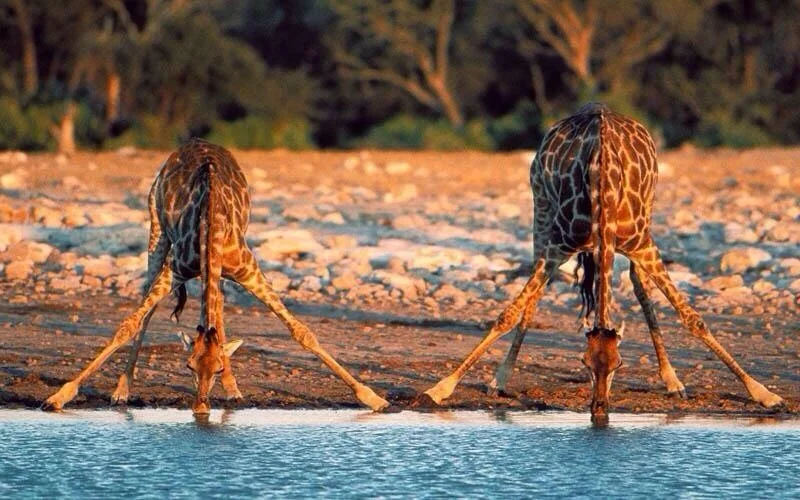 Due to the extraordinary length of their necks, giraffes must splay their legs wide apart to lower their heads enough to reach the ground for drinking. This position, while necessary for hydration, unfortunately leaves them more exposed to predators, yet it’s a risk they must take to quench their thirst.
Due to the extraordinary length of their necks, giraffes must splay their legs wide apart to lower their heads enough to reach the ground for drinking. This position, while necessary for hydration, unfortunately leaves them more exposed to predators, yet it’s a risk they must take to quench their thirst.Additional information
| Habitat | Kilimanjaro National Park, Mount Meru, Mount Kenya, Serengeti |
|---|

